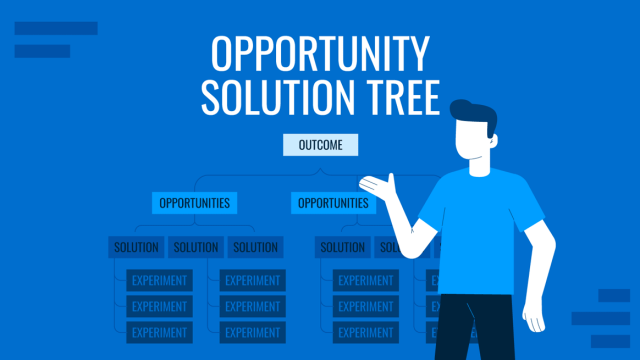
No matter how experienced you are, receiving negative feedback on a proposal or presentation stings. You may have spent hours refining your ideas, aligning with objectives, and anticipating questions, only to hear that it didn’t resonate with your target audience. In professional settings, these moments are unavoidable. What defines your growth isn’t whether you avoid critique, but how you interpret and apply it.
This article outlines a practical framework for handling negative feedback: how to absorb it without taking it personally, evaluate its validity, extract value from it, and use it to improve both your work and your process.
Table of Contents
- What is Negative Feedback?
- Understanding the Nature of Feedback
- Emotional Responses: Recognize and Regulate
- Separating Content from Delivery
- Analyzing the Critique
- Reframing Negative Feedback as Opportunity
- Rebuilding Confidence Without Dismissal
- FAQs
- Final Words
What is Negative Feedback?
Negative feedback refers to any response that highlights perceived flaws, shortcomings, or areas for improvement in your work, specifically in contexts like business proposals, presentations, or project outcomes. It typically points out mismatches between your intent and how others received your message.
This type of feedback can address issues of clarity, logic, tone, structure, design, accuracy, or audience engagement. It may be direct or subtle, and it can come from clients, peers, supervisors, or stakeholders. While it often feels personal, it functions as a diagnostic tool, not a personal attack.
Understanding the Nature of Feedback
Many professionals interpret negative feedback as a direct judgment on their competence or value. This assumption distorts its purpose. Feedback is not a final ruling. It is a reflection of how your work was received by others at a particular point in time. It might be informed by misinterpretation, psychological biases, gaps in communication, or genuine issues in your proposal. Separating your identity from the feedback you receive is the first step toward using it productively.
Sources and motivations matter
Criticism comes in many forms, but it can usually be traced back to one of three intentions: to improve, to challenge, or to assert control. Feedback from peers, managers, or clients might stem from a desire to align expectations, improve results, or clarify goals.

Understanding the source and motive helps frame the message correctly. A manager requesting revisions is not dismissing your abilities; they might be managing risk, adjusting tone, or aligning with stakeholder expectations. This framing changes the emotional impact and can help you respond constructively.
Emotional Responses: Recognize and Regulate
The natural sting
Rejection and critique tap into basic human fears: being judged, excluded, or seen as inadequate. Our brains process social rejection similarly to physical pain. That gut reaction when a proposal is dismissed is part of being human. The problem arises when this response becomes the lens through which all feedback is interpreted. It’s essential to name what you feel: defensiveness, embarrassment, anger, disappointment; and avoid reacting based on it.
Pause before responding
When feedback is fresh, especially if it’s public or comes after significant preparation, it’s easy to defend yourself impulsively. This can erode trust or damage professional relationships. Pausing gives you space to move from emotional reaction to informed response. You might not agree with the critique, but delaying your reply ensures you’re responding to the substance, not to the sting.
Recommended lecture: Presentation Skills
Separating Content from Delivery
The value of feedback isn’t always in how it’s communicated. A client might express dissatisfaction with a frustrated tone. A stakeholder might dump criticism into an email without context. Delivery style can obscure valuable insight. Your job is to extract what’s useful. Is the objection about clarity, tone, timing, or format? What triggered the reaction? Distill the core message and set aside the emotional delivery.
Listening for signal, not noise
Sometimes the most valuable insights are buried under vague or unfocused complaints. Learn to identify patterns. If three different people mention confusion, the issue may be with your framing or transitions. If the same phrase is singled out as problematic, consider how it might land with others. Treat every comment as a data point, not a personal slight.

Analyzing the Critique
Begin by reviewing the exact feedback you received. If verbal, write it down as close to verbatim as possible. Separate subjective statements from concrete observations. “This didn’t land well” is vague, but “I wasn’t sure what your main point was until the third slide” points to a structural issue. Categorize feedback into themes: content clarity, visual design, logical flow, tone, or technical errors.
You should also be aware that audiences come with different knowledge levels. Not all speeches will land in the same manner, and that’s normal. In our experience, it’s a good practice to learn how to present complex concepts for technical presentations. Frameworks, like the Feynman Technique can do wonders in terms of understanding.

Check for blind spots
Often, negative feedback exposes areas you hadn’t considered. Maybe you overestimated what your audience already knew, or didn’t adjust your message for time constraints. These oversights are not failures but data. They allow you to refine your assumptions. Reviewing your presentation or proposal from the lens of the feedback can reveal the gap between intention and reception.
Don’t ignore what went well
Even in critical feedback, there are often nods to what worked. Acknowledge and keep those elements. They represent strengths you can build on. Improvement doesn’t mean starting from scratch. It means adjusting what didn’t resonate while preserving what did, so that’s why you ought to leverage positive feedback each time.
Reframing Negative Feedback as Opportunity
When someone says your message wasn’t clear, what they’re often expressing is: “I expected to understand this faster.” Use feedback as a map of unspoken assumptions. It tells you what your audience values, where they felt lost, or what they found irrelevant. This information helps you recalibrate your future communication. Adjusting tone, structure, or depth of content isn’t surrendering your vision. It’s making it legible.
Feedback loses power when it’s filed away and never acted on. Make it a habit to translate critique into a change, even if small. It might mean revising your opening, improving slide readability, or preparing clearer presentation summaries. Changes signal to your team or clients that you listen and adapt. Over time, this reputation pays off.
Rebuilding Confidence Without Dismissal
A setback is not a label. Processing feedback often includes rebuilding your sense of competence. One rejected pitch does not mean you’re bad at your job. Don’t overcorrect by doubting all your instincts. Instead, isolate what didn’t work and compare it to what did. Professionals improve not by avoiding failure, but by knowing how to learn from it. This process builds resilience.
Resist the urge to overcompensate
Sometimes, after negative feedback, people respond by overhauling everything. They become risk-averse or cater too much to others’ opinions. This weakens their work. Not all critique requires major change. Focus on adjusting the pieces that mattered. If the narrative arc was strong, don’t rewrite it; just tighten the transitions.

FAQs
What should I do if the feedback contradicts itself?
Conflicting feedback often reflects differing expectations among your audience. Instead of choosing one side, revisit your goals and intended message. Which feedback aligns more closely with the purpose of your proposal or presentation? Prioritize based on alignment with key decision-makers or your core objectives, not on volume or intensity of critique.
How do I handle feedback that targets my personality instead of my content?
If comments veer into personal territory, calling you “too aggressive” or “too timid,” for example, redirect the conversation to the work. Say, “Can you clarify how that affected the message’s clarity or persuasiveness?” Keep the discussion anchored in the content. Personal comments often stem from unconscious bias and should be filtered accordingly.
What if the feedback comes from someone who clearly didn’t pay attention?
If a critic misunderstood or missed key parts of your presentation, don’t dismiss the feedback outright. Ask yourself whether the structure or emphasis made it easy to follow. You may need to highlight your key points earlier, repeat them strategically, or use stronger transitions to anchor attention.
How do I stop dwelling on harsh feedback for days afterward?
Set a clear feedback reflection window, 24 to 48 hours, to process, extract learnings, and implement changes. After that, move forward with the revisions. Letting it linger mentally can affect your confidence and performance. If needed, write the feedback down, pull out the actionables, and archive the rest.
Is it okay to ask someone to rephrase their feedback if it came across as hostile?
Yes. You can say, “I want to make sure I understand your point, could you restate it in terms of what could be improved?” This signals that you’re open to input but need it framed constructively. Most people will adjust their tone if they see you’re receptive and not defensive.
Can I request feedback in writing instead of verbally to avoid misinterpretation?
Absolutely. Written feedback creates a record you can analyze more calmly, without the pressure of reacting in real time. It also allows for follow-up questions to clarify intent. You can frame it as, “Would you be willing to summarize your thoughts via email so I can reflect before responding?”
How do I balance authentic voice with feedback urging me to be more formal or corporate?
Find a midpoint. Maintain your natural communication style while adjusting vocabulary or structure to suit the audience. You don’t need to adopt jargon or robotic phrasing; just consider whether your tone supports clarity and credibility for that context.
Final Words
Processing negative feedback doesn’t require you to agree with everything, erase your voice, or dilute your message. It demands discipline in how you interpret critique, openness to improve, and the emotional steadiness to separate temporary discomfort from long-term development. When approached thoughtfully, even the most uncomfortable feedback becomes a tool for refining your ideas, sharpening your communication, and building professional trust.


